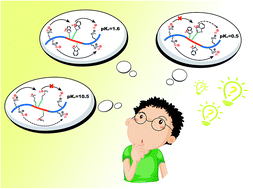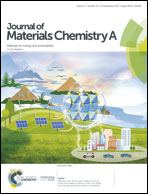Do acid–base interactions really improve the ion conduction in a proton exchange membrane? – a study on the effect of basic groups†
Abstract
Generating acid–base interactions between sulfonic acid groups in a proton exchange membrane (PEM) and the incorporation of basic groups are effective approaches to improving the physicochemical properties of a membrane. However, it remains unclear whether the effect of various basic groups is identical or different when covering a wide range of pKa values. Herein, we report for the first time the molecular design and fabrication of novel multi-block proton exchange membranes, bearing three different basic groups, i.e., benzoxazolium (pKa 0.5, M-BO), benzotriazolium (pKa 1.6, M-BT), and propylamino groups (pKa 10.5, M-BC). Monomeric precursors were purposefully designed and synthesized separately, and the corresponding polymers were obtained through an oligomeric polycondensation reaction. The as-prepared membranes were systematically characterized in terms of their mechanical robustness, water uptake, dimensional changes, proton conductivity, and polarization curve measurements in single cell tests. The results indicate that the acid–base interactions generated in all the membranes help to suppress the excessive water absorption and physical swelling. However, the proton conductivity of the M-BC membrane was significantly lowered owing to the strong basicity of propylamino groups, which may neutralize the membrane acidity, impeding the proton conduction. Membrane M-BT exhibited the most superior performance among all three membranes, which was probably due to the “protonation–deprotonation” loop formed between the hydrophilic and hydrophobic moieties, strengthening the conductivity by lowering the ion transfer barrier. Overall, based on the practical operating conditions of a PEM fuel cell, our results comprehensively reveal the influences on the physicochemical properties brought about by the different basic groups, paving the way for future designs of high-performance PEMs.



 Please wait while we load your content...
Please wait while we load your content...